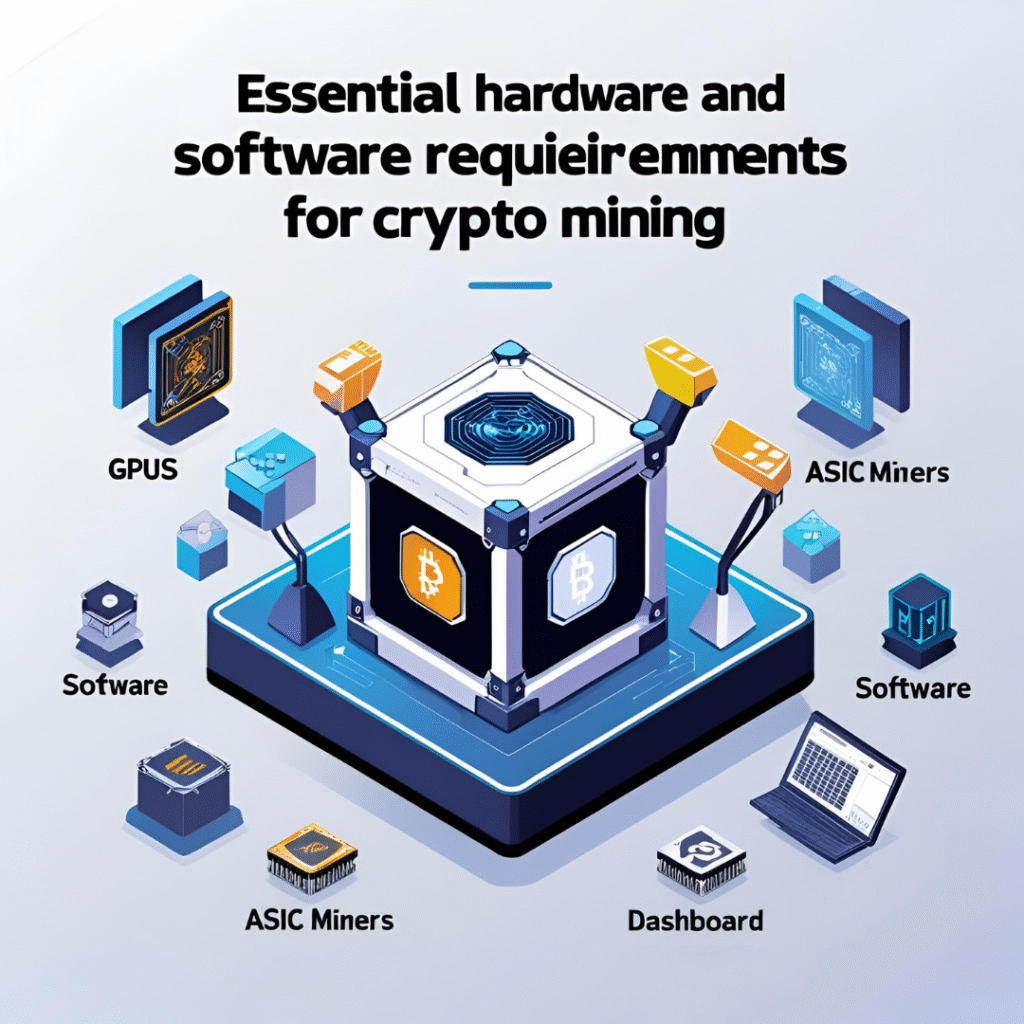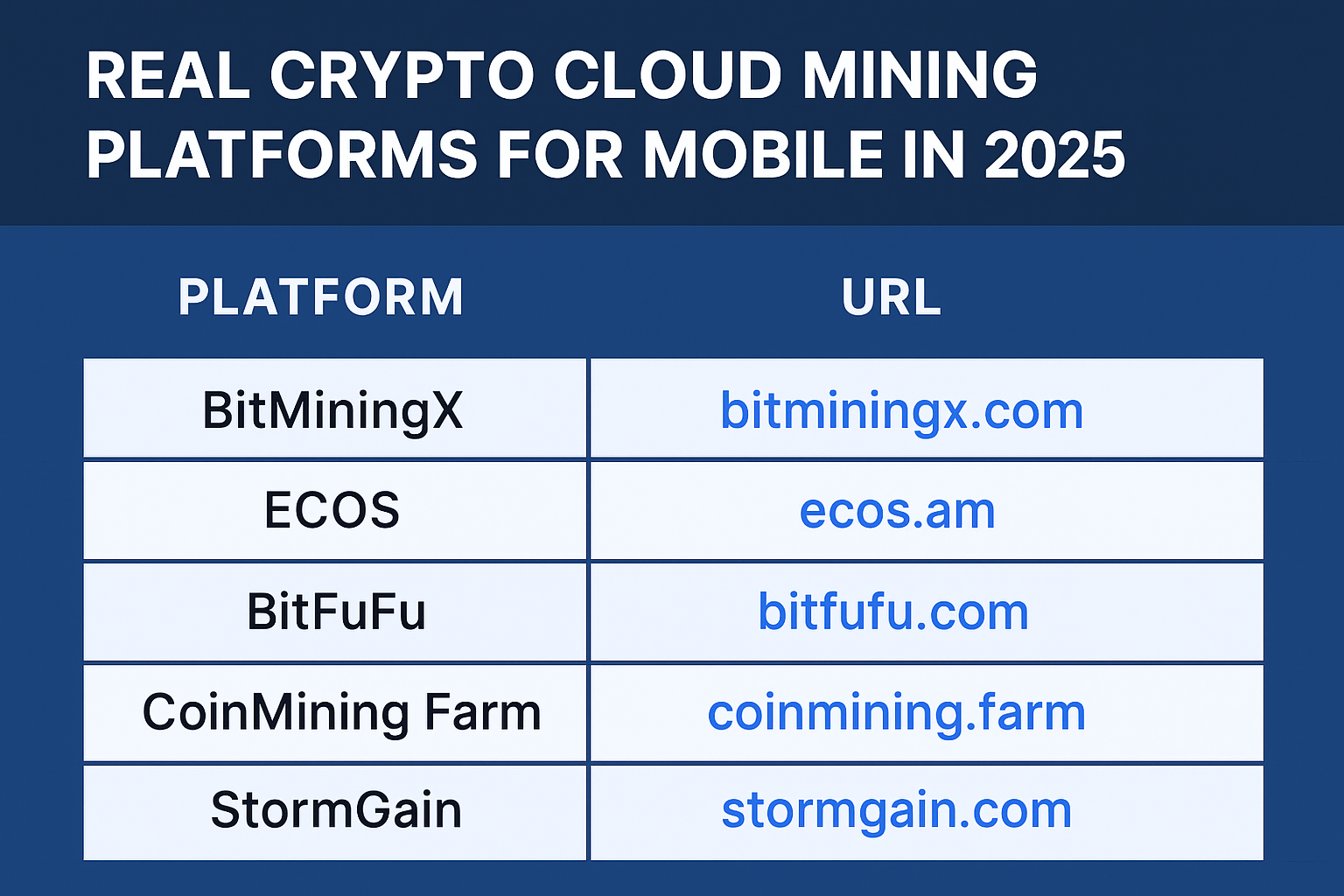Mining cryptocurrency on a laptop involves several systematic steps. First, users must select compatible mining software, like CGMiner or NiceHash. They should guarantee their laptop has a robust CPU and, ideally, a dedicated GPU for improved performance. Cooling solutions must be in place to prevent overheating. It is vital to monitor hardware performance and adjust settings accordingly. Understanding profitability versus risks is essential for making informed decisions, especially when exploring how to mine cryptocurrency on a laptop. Further insights on maximizing efficiency await exploration.
Key Takeaways
- Choose compatible mining software like CGMiner or NiceHash that suits your laptop’s operating system and specifications.
- Configure the mining software with your wallet address and select a mining pool for efficient transaction validation.
- Invest in a cooling pad to enhance airflow and prevent overheating during intensive mining operations.
- Monitor CPU and GPU temperatures regularly to avoid thermal throttling and potential hardware damage.
- Analyze profitability by comparing potential earnings against operational costs and consider the risks involved in laptop mining.
Understanding Cryptocurrency Mining on a Laptop
Cryptocurrency mining on a laptop presents both unique opportunities and significant challenges for enthusiasts. Understanding cryptocurrency basics is essential, as it involves validating transactions and adding them to the blockchain through a mining process.
This process requires computational power to solve complex mathematical problems, a task typically suited for high-performance hardware. However, laptops, while convenient, often lack the necessary specifications for efficient mining.
Additionally, the heat generated can lead to thermal throttling, reducing performance and potentially damaging the device. Enthusiasts must also consider energy consumption and potential returns on investment, as mining profitability can fluctuate widely.
Essential Hardware and Software Requirements
When starting on the journey of mining cryptocurrency On a laptop, it is essential to understand the important hardware and software requirements that can greatly influence mining efficiency.

The selection of appropriate hardware components and software tools is critical for achieving peak performance.
Key requirements include:
- Powerful CPU: A strong processor enhances the laptop’s ability to handle complex calculations.
- Dedicated GPU: While laptops typically have integrated graphics, a dedicated GPU considerably increases mining potential.
- Mining Software: Utilizing reliable software tools such as CGMiner or NiceHash guarantees efficient operation and better management of mining activities.
Understanding these elements will empower individuals to improve their mining experiences while fostering a sense of community among fellow beginners.
Step-by-Step Guide to Set Up Mining on Your Laptop
Setting up mining on a laptop involves a systematic approach that can markedly enhance the mining experience for beginners.
First, the user must select appropriate mining software compatible with their laptop’s operating system. Next, understanding various mining algorithms is essential, as different cryptocurrencies utilize distinct algorithms requiring tailored software settings.
Once the software is installed, users should configure it with their wallet address and select a mining pool if desired.
Additionally, ensuring effective laptop cooling is important to prevent thermal throttling during mining activities, as prolonged usage can lead to overheating.
Finally, monitoring system performance and adjusting settings as needed can optimize the mining process, fostering a sense of community among novice miners enthusiastic to share their experiences.
Tips for Optimizing Laptop Mining Performance
Optimizing laptop mining performance requires a combination of strategic adjustments and careful monitoring. To maximize efficiency while minimizing risks like overheating, miners should implement effective cooling solutions and manage power settings diligently.

- Invest in a cooling pad: This accessory enhances airflow and prevents thermal throttling, essential for prolonged mining sessions.
- Adjust power management settings: Configuring the laptop to prioritize performance can greatly boost hash rates, although it may lead to increased energy consumption.
- Monitor system temperatures: Utilizing software tools to keep track of CPU and GPU temperatures helps in avoiding hardware damage and maintaining ideal performance.
Evaluating Profitability and Risks of Laptop Mining
Profitability and risk assessment are critical components in the decision-making process for anyone exploring how to mine cryptocurrency on a laptop. Conducting a thorough **profitability analysis** involves evaluating potential returns against **operational costs**, such as electricity consumption and hardware wear.
Given the limited processing power of laptops compared to dedicated mining rigs, profits may be marginal, especially in competitive markets.
Furthermore, effective risk management is essential; users must recognize the potential for overheating, hardware failure, and the volatility of cryptocurrency prices. These factors can considerably impact overall returns.
As a result, aspiring miners should weigh the benefits of laptop mining against associated risks and costs to determine if this method aligns with their **financial goals** and technical capabilities.
Frequently Asked Questions
Can I Mine Cryptocurrency on a Standard Laptop?
The feasibility of mining cryptocurrency on a standard laptop hinges on mining performance and laptop specifications. While possible, limitations in processing power and thermal management may hinder efficiency, leading to suboptimal results compared to dedicated systems.
How Long Can I Run Mining Software Continuously?
Continuous operation of mining software can strain hardware, potentially leading to overheating and reduced lifespan. Users should monitor performance impact and consider intermittent use to maintain system integrity and guarantee peak mining efficiency over time.
What Cryptocurrencies Are Best for Laptop Mining?
Determining the best laptop cryptocurrencies involves analyzing factors like energy efficiency and profitability. Popular mining software options include those optimized for lightweight algorithms, enabling laptops to effectively mine cryptocurrencies such as Monero and Ravencoin.
Is Laptop Mining Eco-Friendly Compared to Traditional Mining?
Laptop mining generally exhibits lower energy consumption than traditional mining, potentially aligning with sustainable practices. However, its overall eco-friendliness remains contested, as factors like electricity sources and hardware efficiency greatly influence environmental impact.
How Does Mining Affect Laptop Battery Life?
Mining greatly impacts laptop battery health, as continuous high-performance demands lead to increased energy consumption. This results in reduced battery lifespan and potential performance impact, necessitating careful consideration for users engaging in laptop-based mining activities.
Conclusion
In summary, mining cryptocurrency on a laptop can be a feasible entry point for beginners, provided they understand the inherent limitations and requirements. By carefully selecting the appropriate hardware and software, and following a structured setup process, novice miners can effectively engage in this digital venture. However, it is essential to continuously evaluate performance and profitability, considering both the potential rewards and risks associated with laptop mining. Staying informed on evolving technologies will further enhance their mining experience.




